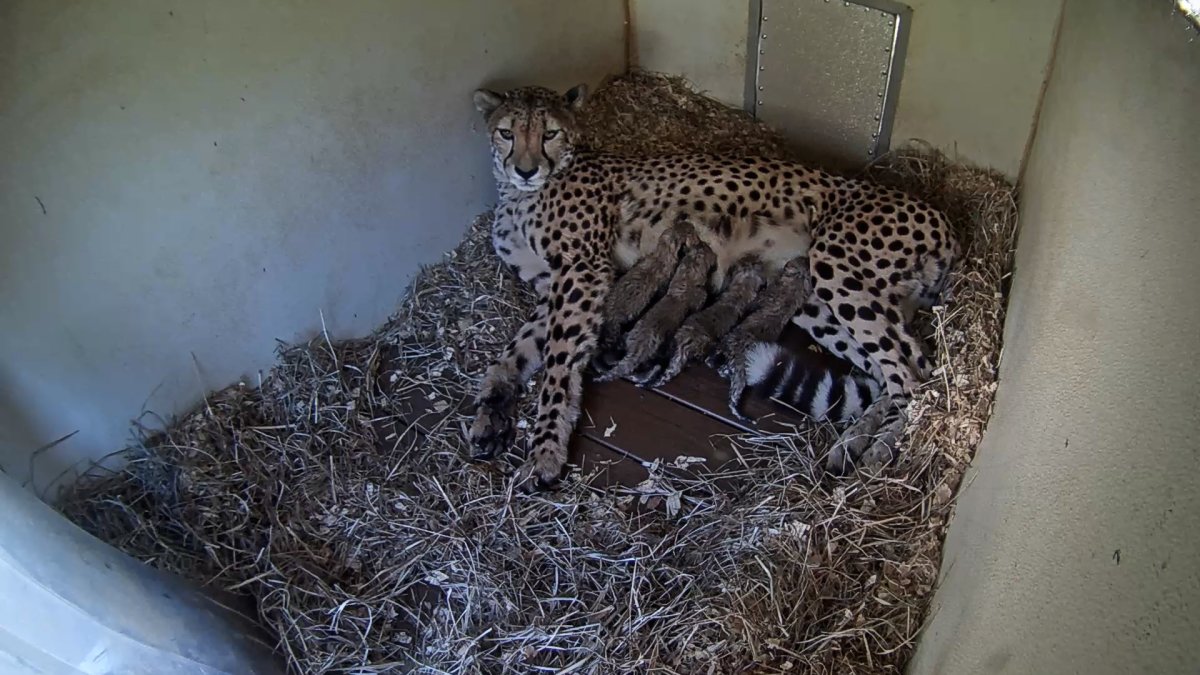Even during the longest government shutdown in U.S. history, life goes on — literally.
While the Smithsonian’s National Zoo and Conservation Biology Institute was closed to the public and not sharing news during the six-week-long shutdown, the animals that call the zoo home continued about their business. It turns out the cheetahs at the zoo’s Front Royal campus have four new cubs to show for it.
On Oct. 17 and 18, a litter of four new cheetah cubs was born — and they’re doing well, according to the zoo.
“The cubs appear to be strong, active, vocal and eating well,” the zoo said in a press release about the baby cheetahs.
Zookeepers have been keeping an eye on the cubs via the Cheetah Cub Cam live camera feed, giving their mom time to bond with them without human interference.
Male cheetahs are not typically involved in raising their cubs, and dad Flash — an 8-year-old male cheetah at the Front Royal campus — is no exception.
Their mom, Amabala, is a 5-year-old adult cheetah that was also born at the Front Royal facility, back in 2020. It’s a full-circle moment for an endangered species, and for the conservation program at the zoo.
The new litter of cubs is the 20th born in Front Royal, and the fifth to be born on the Cheetah Cub Cam.
“Cheetahs can be challenging to breed, in part because female reproductive cycles can be sporadic and their behavior is often very difficult to interpret,” carnivore biologist Adrienne Crosier said in the press release. She leads the cheetah Species Survival Plan for the zoo.
“It’s taken our team of keepers, veterinary staff and biologists thousands of man-hours to produce 20 litters,” Crosier said. “For that 20th litter to be Amabala’s is an exciting, full-circle moment for us.”
Cheetahs are native to sub-Saharan Africa, according to the zoo, and they typically live in small, isolated populations. The species is considered vulnerable to extinction due to human conflict, poaching and habitat loss.
The zoo estimates that only around 7,000 cheetahs are left in the wild.
That’s part of why the National Zoo is is part of the Cheetah Breeding Center Coalition, “a group of 10 cheetah breeding centers across the United States that aim to create and maintain a sustainable North American cheetah population under human care,” the release says.
The new litter is an exciting step forward for that program.
Animal lovers can watch the litter of four cubs grow via the same Cheetah Cub Cam that the zookeepers are watching, which is available on the National Zoo’s website here.

